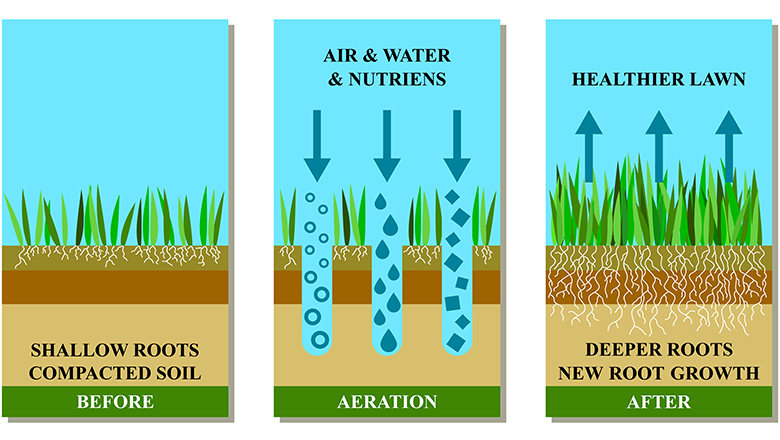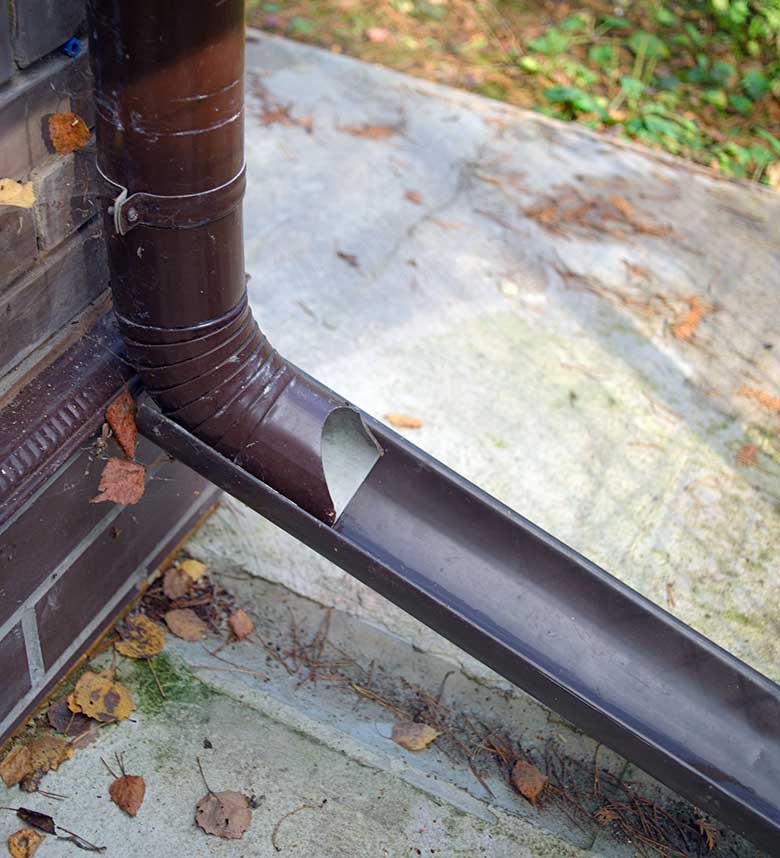Keep it Green
Lawn Irrigation
One of the key ways you can help to keep lawn care more sustainable is by thinking about how you keep your lawn irrigated. Turf grasses and other plants in a native landscape need water for growth and development. By implementing proper irrigation practices, lawn quality and aesthetics will be improved, while at the same time, lowering water bills. By watering infrequently and deeply you can help improve the health of your lawn.

The following techniques will put you on the path to proper lawn irrigation practices and prevent over watering:
- A typical turfgrass requires 2.5 cm of water per week (through rainfall or irrigation), which will soak the upper 10 cm of soil.
- Monitor your irrigation by placing a can in path of sprinkler flow and stop irrigation once 2.5 cm of water has accumulated in the can.
- Ideal irrigation times are when temperatures are cooler in the early morning or early evening and when wind speeds are low.
- Let lawn completely dry out between irrigation intervals. The soil should be difficult to penetrate before irrigation.
- Lawns require water when the grass turns light-green to brown in colour and the stalks remain bent over after being walked on.
- Stop irrigation when puddling or runoff occurs. Excessive moisture can potentially cause fungal disease in grasses and also prevents grasses from extending deep roots.
- Where possible, reuse collected stormwater from rain barrels for irrigation of gardens or smaller areas.
- Use sprinklers with uniform water application patterns. Do not aim sprinklers in a pattern that will water sidewalks, driveways, or the sides of homes.
- Without watering, most lawn grasses will go dormant over the hot summer months. This should not be a concern and the grasses will begin growing again during the cool season months.
Pet Clean-Up
Pet waste is a health hazard and a pollutant as it contains excess phosphorus and harmful bacteria which can harm lake water quality. The following guidelines will provide for the proper cleanup of pet waste and the elimination of any health concerns due to contact concerns.
- Clean up all animal waste whether on your lot or on trails or other places in the community.
- During walks, bring a bag and dispose of the waste in the toilet, garbage, or a designated pet compost area.
- In your yard, encourage pets to use one location. This will make clean-up easier and this area can be isolated from the rest of yard, which can prevent accidental contact with the pet waste.
- Do not feed geese—It encourages them to frequent your yard and generate waste in your yard, driveway, or sidewalks.
- Pick up after pets before cleaning patios, sidewalks or driveways. Do not spray waste onto streets or into gutters.

Pesticide Use
Pesticides should be applied only as a last resort, or not at all. The major source of pesticides in urban streams is home applications to kill insects and weeds in the lawn and garden. If you need pesticides, certain pesticides may be permitted. Call Clean Nova Scotia (902) 420-6593 or visit the HRM website for more information.
Dethatching
Thatch is a layer of living and dead organic material that lies on top of the soil that can be a home to insects and fungus spores as well as prevent water, fertilizer and air from reaching the soil. The information below provides information how to avoid thatch formation and the removal of thatch should it become a problem:
- Avoid over fertilization and excess pesticide application. Thatch buildup is typically due to excess nitrogen and pesticide in the growing zone.
- Mulching lawnmowers do not cause thatch buildup. If thatch buildup becomes a problem, maintenance will be required on a yearly basis. The following options are available for thatch removal/control:
- Aeration—Mechanical aeration equipment will break up the thatch, allowing air to penetrate the soil and enhance thatch decomposition.
- Heavy Raking—A manual removal method for thin thatch layers.
Aeration

Regular ground aeration is vital for a long-lasting and healthy lawn.
Manage your downspouts
Roof leaders (downspouts) at the Parks of West Bedford where ever possible are directed to lawns and vegetated areas to recharge groundwater. The installation of a downspout diverter can help you to direct water to certain areas on your lot. Benefits of this technique include:
- Low cost alternative that directly reduces stormwater runoff.
- Allow management/use of stormwater on the property.
- Reduce water bills by using stormwater to irrigate lawns and gardens.
- Reduce the volume of stormwater runoff to end of pipe facilities.

Downspouts should drain the water away from any impervious areas, such as the foundation or driveway, and into vegetated zones.
